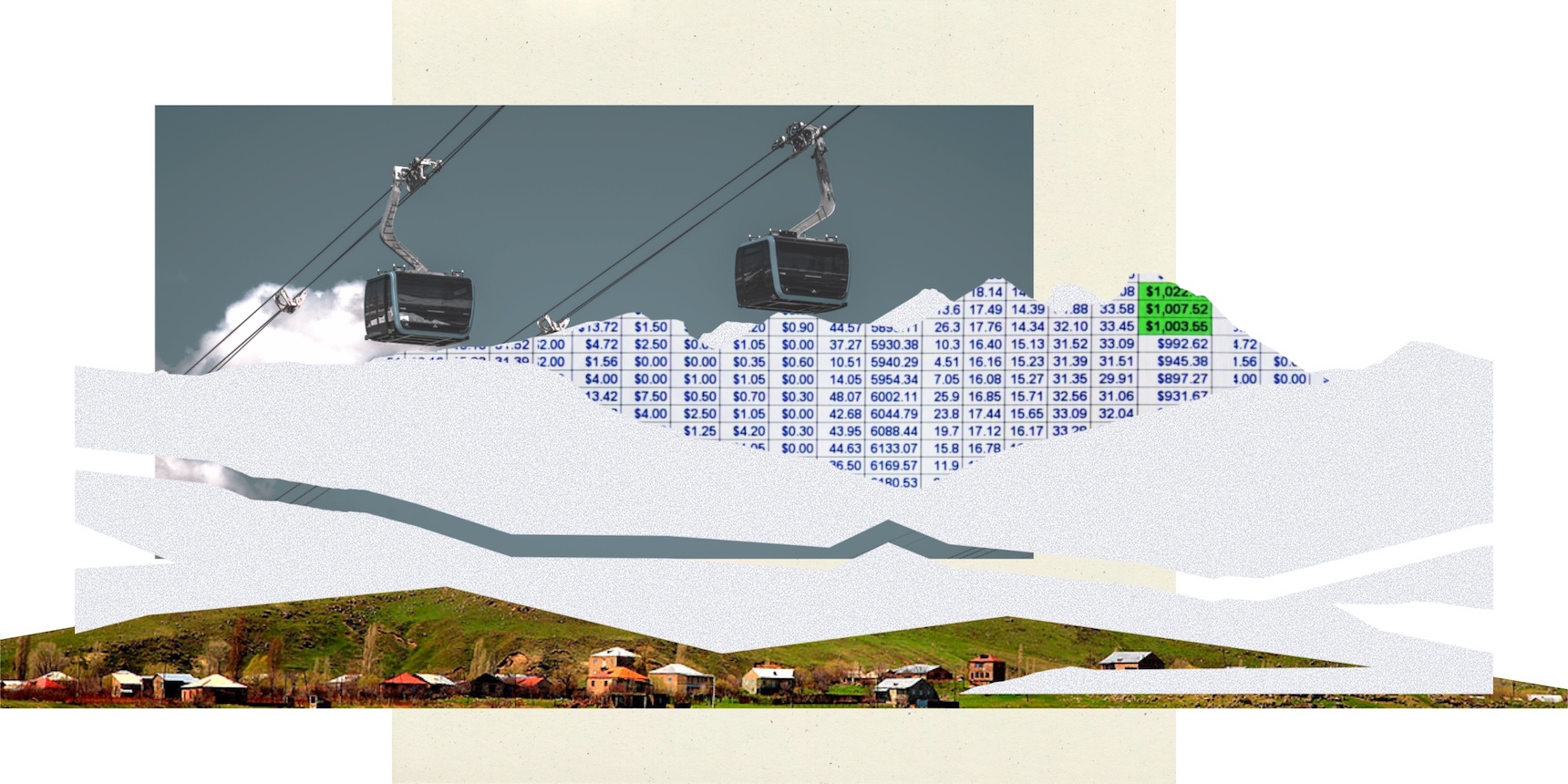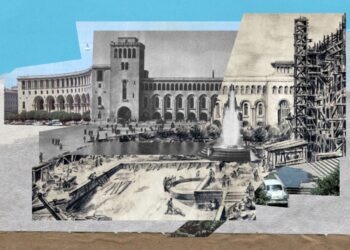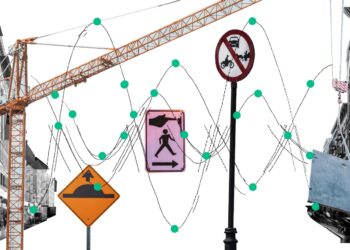

Armenia’s newest ski resort, Myler Mountain Resort, located near the village of Yeghipatrush in Aragatsotn region, was partially opened last December. It is expected to become a future hub for winter sports enthusiasts, despite complaints from villagers and concerns about the way it is being developed.
The Armenian government approved the project in the summer of 2022, allocating over 2000 hectares of land adjacent to the Aparan water reservoir for the construction of the recreational area. In October, the government declared eminent domain over the land.
The Project
The investment plan includes the construction of high-speed ropeways, a hotel complex, a casino, a children’s skating rink, a restaurant, mountain roads and slides, as well as an artificial snowmaking system and a zipline.
Part of the cooperation with the government entails granting the area the status of a free economic zone and providing privileges to private investors.
According to the project plan, the total value of the investment stood at 15 billion AMD ($38 million). The plan aims to attract an additional 15 billion AMD from other private investors during and after the construction, which is scheduled to be completed next year.
The construction of the complex is expected to involve 250 workers. Once the investment project is complete, 1,500 full time jobs will be created with an average salary of 180,000 AMD. Myler Mountain Resort aims to serve an average of 500,000 customers per year, who, it is estimated would spend 100,000 AMD per visit
The company anticipates serving over 6,000 customers per day, with the annual number of customers averaging approximately 200,000 during the project implementation period. The additional expected infusion of 12.6 billion AMD is projected to increase the country’s GDP by 0.2%.
People’s Lands
The resort is located next to the village of Yeghipatrush and the Aparan water reservoir, and occupies a portion of the forested mountains.
To build the resort, the company plans to cut down part of the forests, with a promise to plant more trees in their place. The investment plan acknowledges that deforestation is inevitable, and asserts that because the project is continuous, the exact amount of deforestation cannot be determined in advance. However, the company has pledged to finance the planting of a forest several times larger than the amount of deforestation that will occur.
The lands belonging to the residents of Yeghipatrush, next to the forests, are important for implementing the project. In many cases, these lands are the main source of income for the residents and the main grazing area for their cattle. This left the residents with the choice to either sell their lands early and get at least something out of it or wait.
Those who had been waiting were faced with the reality that the lands belonging to them were declared as eminent domain. This gave the government the power to acquire the land from the owners by providing them with a small amount of compensation or offering to exchange the land with other plots of land elsewhere in the region.
However, the residents did not agree to give up the lands in front of their homes that they used on a daily basis. In some cases, land was classified as “deserted”, even as it was being cultivated by the owners.
Like many Armenian villages, the residents of Yeghipatrush rely on income from cattle and agricultural land. However, with the government and Myler taking away their land and the future resort set to grow even bigger, residents are at risk of losing agriculture as a means of income. Few hope to secure jobs in the new resort.
Despite protests, letters and direct communication with Armenia’s Prime Minister Nikol Pashinyan, the project became a reality, with little attention paid to the demands of the people.
The residents have also complained that the project was approved without public hearings and without considering the needs and concerns of the people.
According to the Ministry of Economy, the lands were declared “public interest” because the expected benefits of the project to the region outweighed the individual interests of the landowners. The project is expected to encourage investment, create new jobs, and develop tourism.
Government Support and Contradictions
Despite the project being welcomed by the government and Pashinyan himself, some government and local officials have expressed opposition to the project as a whole or certain aspects of it.
The then Ministry of Finance’s Atom Janjughazyan was among those expressing concerns about the project. Specifically, the government’s decision to allow the opening of a casino at the resort which violates the strict rules and policies it has been pursuing to clamp down on casinos and gambling.
The law on gambling and casinos in Armenia specifies that casinos can only operate in Tsaghkadzor, Jermuk, Sevan and Meghri. Exceptions can only be approved if the investment exceeds 40 billion AMD. As the investment for Aparan’s project is less than 40 billion and the town is not in the list of permitted areas according to the law, it is technically not possible to open a casino in Aparan.
Disagreements arose between government bodies regarding the Myler Mountain Resort project The Cadastre Committee suggested selling, rather than leasing, the 1,500 hectares of land through an auction. The Ministry of Economy disagreed with this suggestion.
The Ministry of Territorial Administration and Infrastructure also noted that the investment program did not fully meet the requirements for investment programs.
Furthermore, then-governor of Aragatsotn region, Davit Gevorgyan, noted the complaints he received from people regarding their pastures and agricultural land.
However, Pashinyan remained firm in supporting the project from the beginning. He called the concerns about the casino a “conspiracy”, and urged government officials not to “spread panic” and gave Myler the green light to begin construction.
When residents of Yeghipatrush protested the expropriation of their land, Pashinyan personally visited the village to meet with them and calm the situation.
The protests ceased as residents were promised a solution. However, the proposed solution was to either exchange the lands or relinquish them in exchange for a small amount of money –– only a fraction of the market price.
What Lies Behind the Story
Initially registered in Armenia in 2017 as MyMekh Ski Resort, the company aimed to implement a program in the Pambak mountain range, similar to the current project located between the Lori and Kotayk regions of Armenia.
The project was approved by former Prime Minister Karen Karapetyan and aimed to create slides, ropeways, and other facilities, with an investment exceeding 14 billion AMD.
However, in 2019, Pashinyan’s post-revolution government annulled the decision. It was discovered that some of the lands intended for expropriation were state and communal properties, which were ineligible for expropriation under the law. Additionally, residents of the Antarashen community opposed the plan because it included their pastures and houses, and they did not consent to their expropriation for public interest purposes.
As per the declaration of beneficial owners, Tigran Harutyunyan is the real owner of Myler Mountain Resort. He manages the company through Mikshin LLC, which is also owned by him.
Harutyunyan is the son of businessman Mikhail Harutyunyan and the brother of former Republican MP Vahan Harutyunyan. Mikhail Harutyunyan is the uncle of ex-Republican MP Mihran Poghosyan, who was previously the head of the government’s Compulsory Enforcement Service.
The Harutyunyan brothers are shareholders in several companies in Armenia.
Mihran Poghosyan and the companies affiliated with him have regularly been in the spotlight of journalistic investigations. In October 2022, the Prosecutor’s Office announced that the court would confiscate immovable properties, vehicles, and money from Mihran Poghosyan and seven other individuals affiliated with him.
Interest in Mount Aragats
Myler Mountain Resort was not the only investor interested in establishing a ski resort at the foot of Mount Aragats, which is Armenia’s highest mountain. At least two other investors, one connected with Russia and the other cooperating with French companies, proposed significant investment plans to the Armenian government. However, neither of them received the final green light, losing the battle to the company affiliated with former officials.
Aragate Investments had plans to construct a ski resort on the southern slope of Mount Aragats. The company applied to the Armenian government for approval in 2019 and was awaiting a response. Aragate Investments was working in collaboration with French companies MDP Consulting and Engineering and Société des 3 Vallées, to build a ski slope, ropeways, and hotels that would cover over 5000 hectares of land. The investment package for this project was valued at over $300 million US. The company was owned by businessman Nikolay Sarkissian, who had previously served as the consul of Armenia in Lyon, France.
RID LLC, which belongs to Russian-Armenian businessman Ruben Grigoryan, proposed a similar resort and agricultural farms in the same area and won the bid, promising to invest $200 million US and include 300 farms.
Although the Armenian government supported the second project, France, which was interested in implementing the investment, pushed the government to support RID’s proposal. According to media reports, the disagreements over the project triggered tensions between Armenia and France.
However, despite the approval and support from the government, the RID has not yet started the construction of the resort-farm.
Also see
Sustainable Development in Armenia: Learning From the EU
While sustainable development has become a hot topic in developed countries, it is also an essential issue for developing ones, including Armenia. While the country faces significant challenges, it also has many opportunities.
Read moreBetween Ownership and Neglect, Part 1: MFA Building
In the first of a series of articles about privatized and abandoned historic buildings in Armenia’s capital, Hovhannes Nazaretyan looks at the privatization process and current condition of the former Ministry of Foreign Affairs building in Yerevan’s Republic Square.
Read moreRenewable Energy: Armenia’s Opportunities and Limits
Armenia has achieved significant progress in utilizing renewable energy sources, primarily through hydropower. However, the majority of the country’s electricity still comes from non-renewable sources. Hovhannes Nazaretyan breaks it down.
Read moreWhy Is the City Making Noise?
Living in Yerevan usually means living with constant noise — noise from cars, cafes and pubs, entertainment venues, fireworks — impacting the health and welfare of residents. What can or should be done?
Read moreEnvironment and Energy Through the Public’s Eye
Improvements in low-carbon technologies, driven in part by foreign energy policy, have created new opportunities for Armenia, a country without fossil fuel reserves, aligning environmental concerns and the pursuit of higher energy security more than ever before.
Read moreStruggling to Breathe: Public Transportation and the Air Pollution Crisis
The vast majority of air pollution in Armenian cities is from transport emissions, and both the concentration and quantity of automobiles in Yerevan prevent residents from living in an environment with clean air.
Read more






